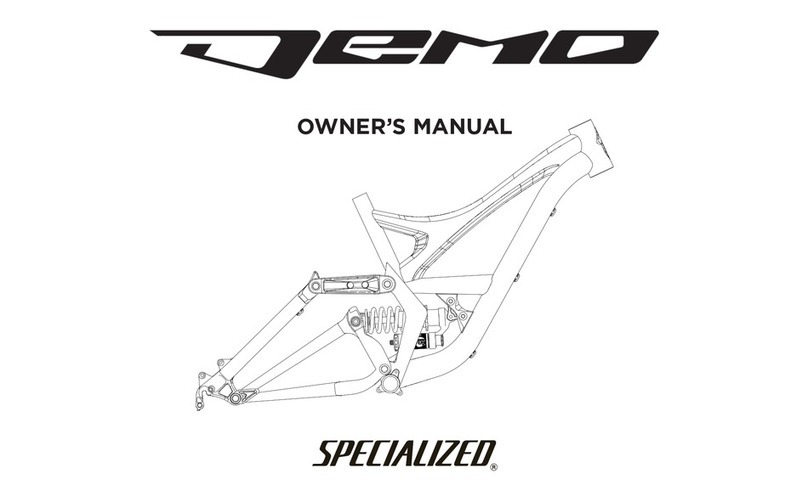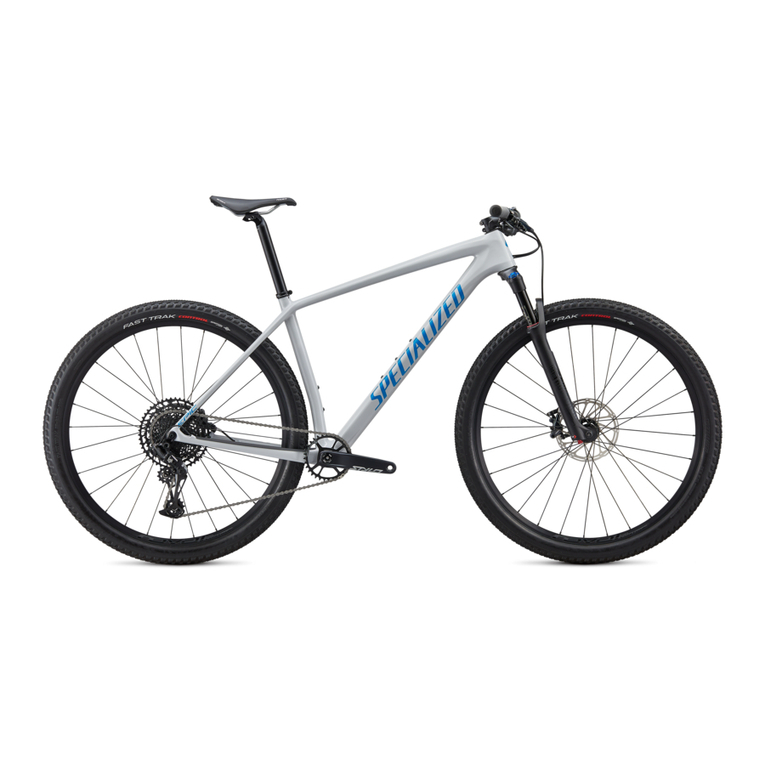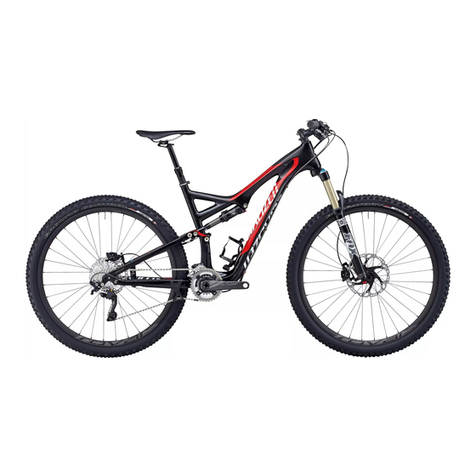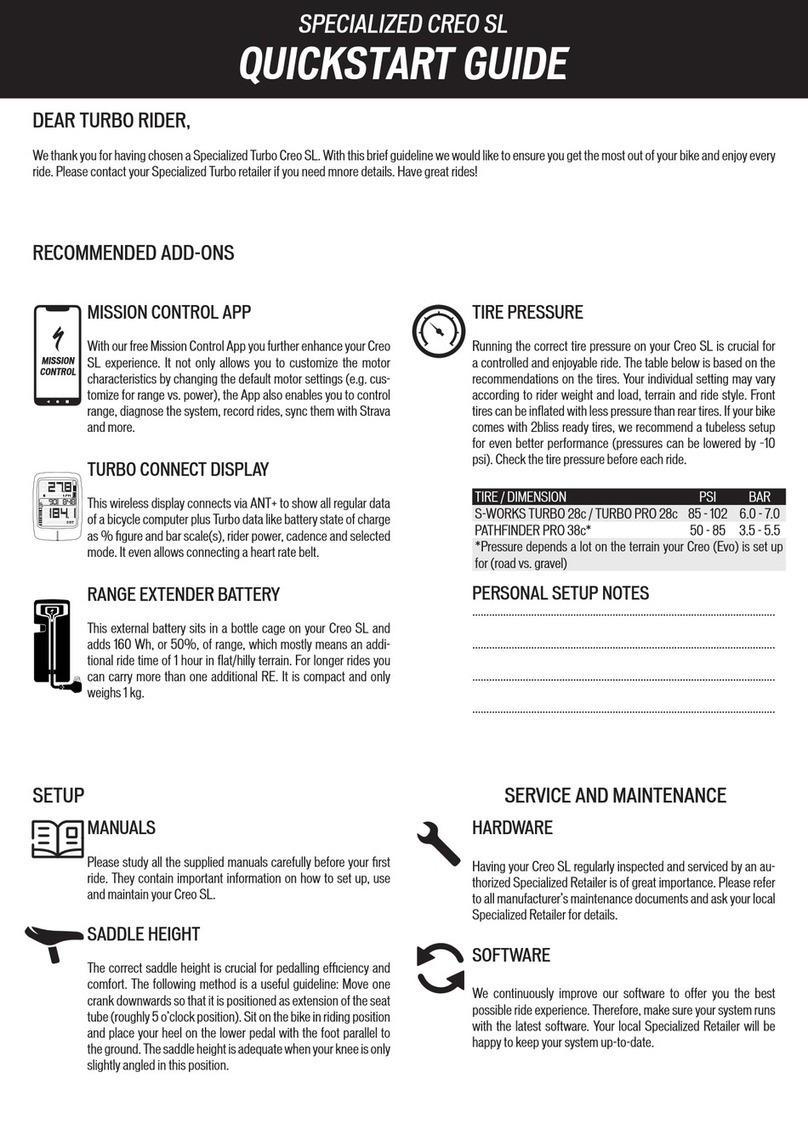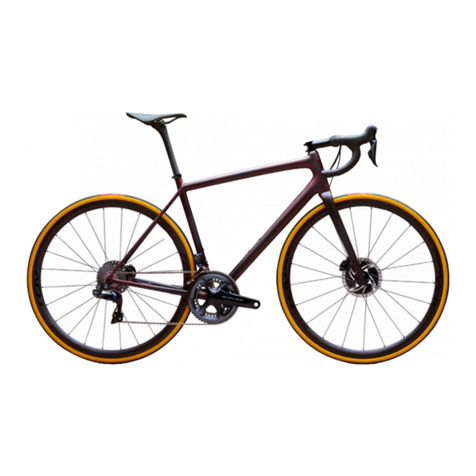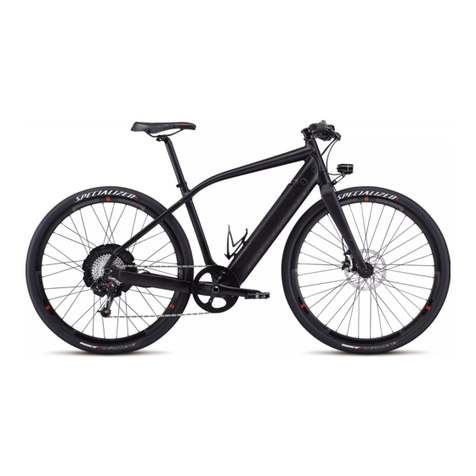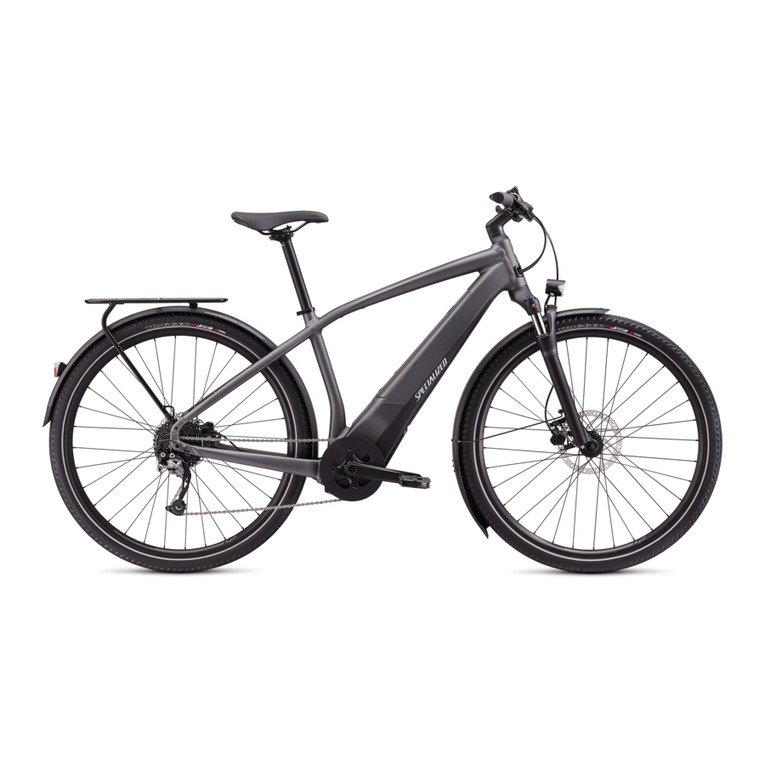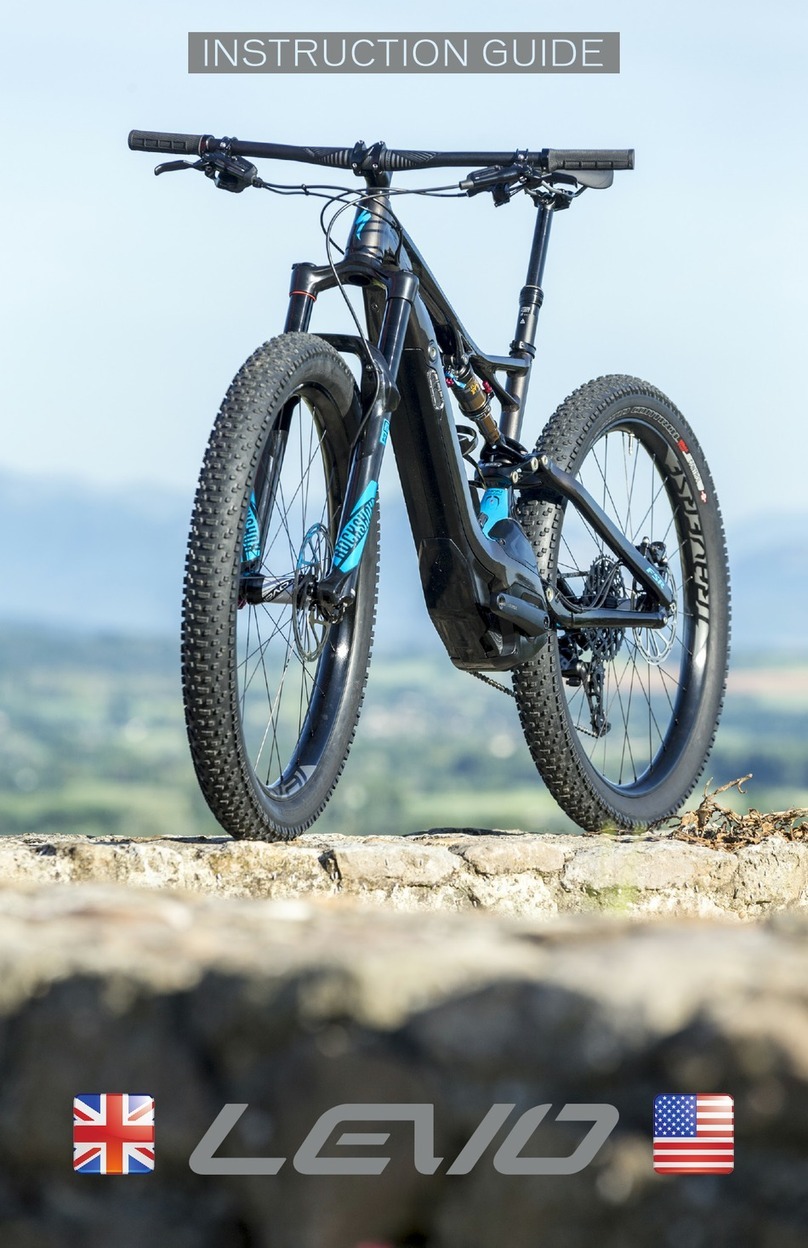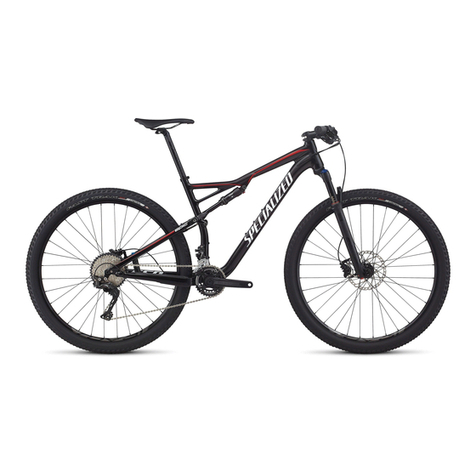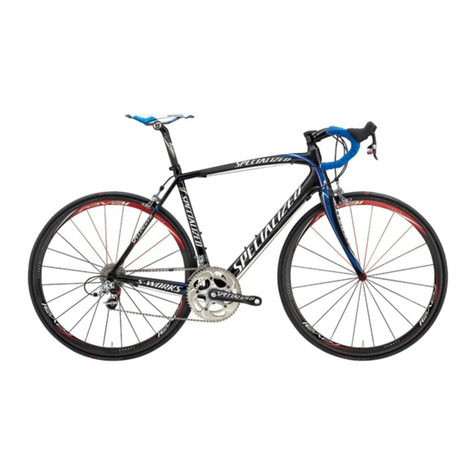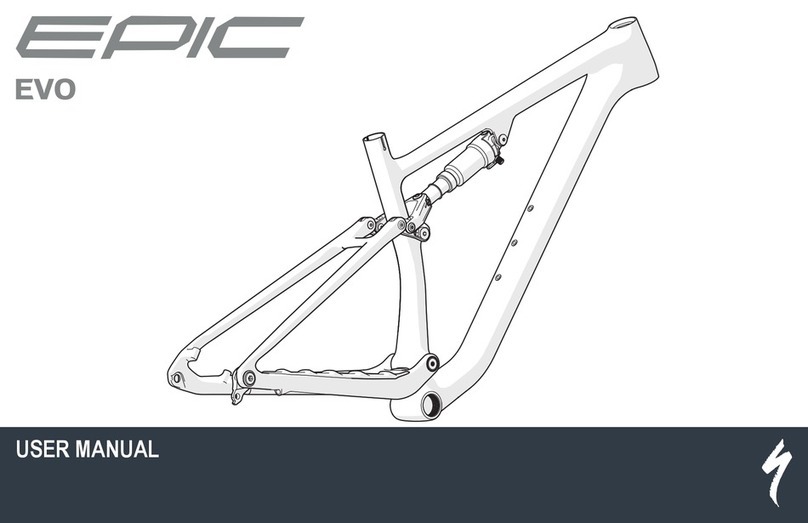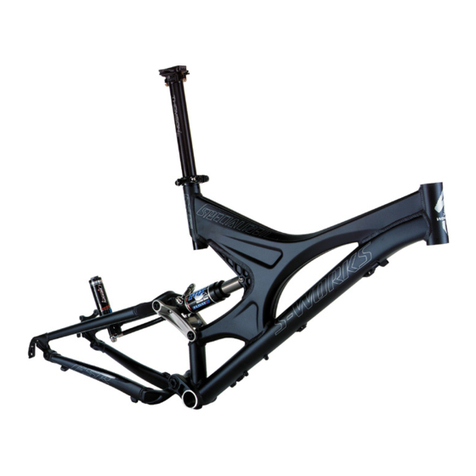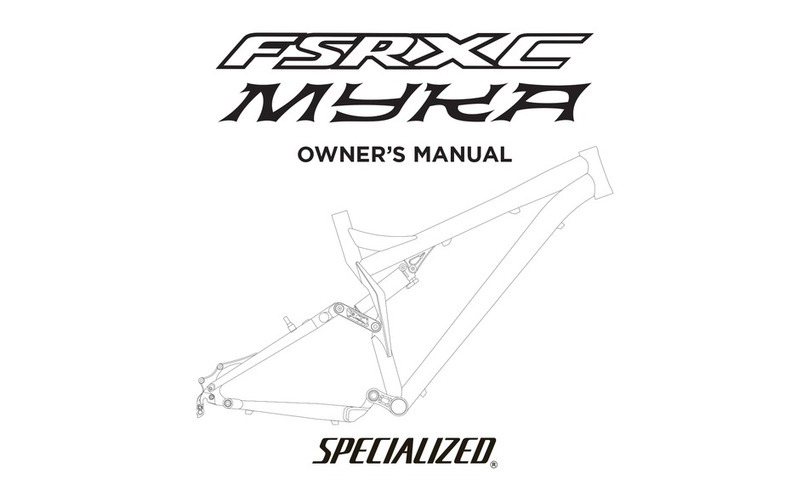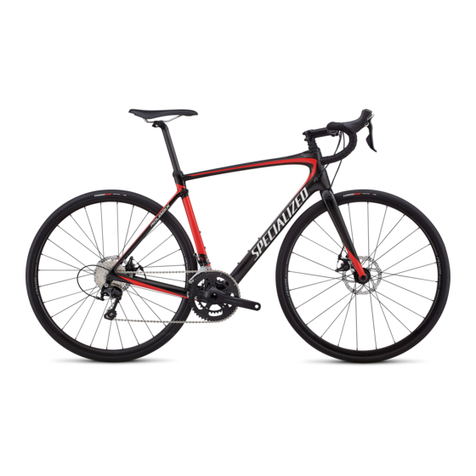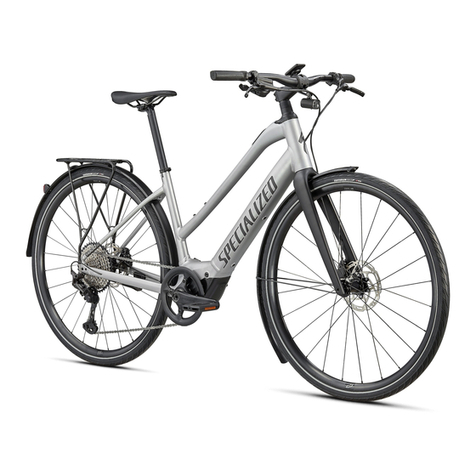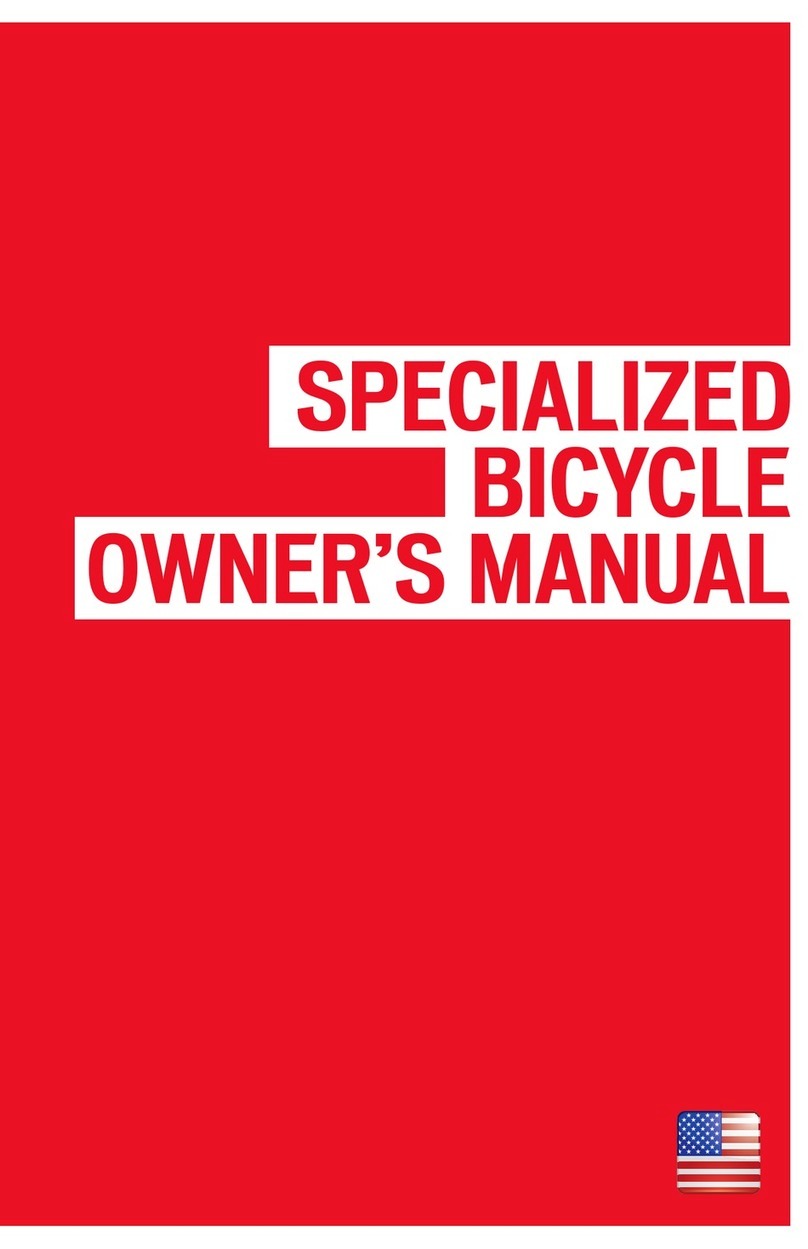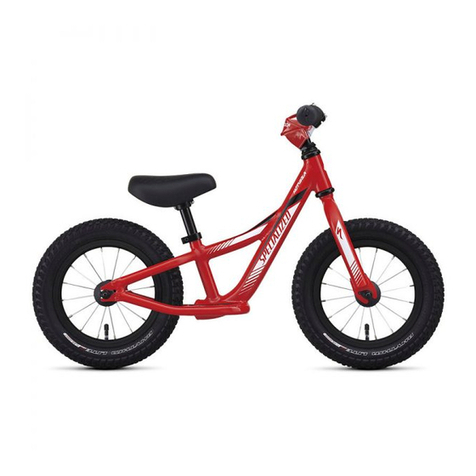
2
2. GENERAL NOTES ABOUT ASSEMBLY
This manual is not intended as a comprehensive assembly, use, service, repair or maintenance
guide. Please see your Authorized Specialized Retailer for all service, repairs or maintenance.
Your Authorized Specialized Retailer may also be able to refer you to classes, clinics or books
on bicycle use, service, repair, and maintenance.
WARNING! Due to the high degree of complexity of the Enduro FSR, proper
assembly requires a high degree of mechanical expertise, skill, training and
specialty tools. Therefore, it is essential that the assembly, maintenance and
troubleshooting be performed by an Authorized Specialized Retailer.
WARNING! Many components on the Enduro FSR, including, but not limited
to the rear suspension, are proprietary to the Enduro FSR. Only use originally
supplied components and hardware at all times. Use of other components or
hardware will compromise the integrity and strength of the assembly. Enduro
FSR specific components should only be used on the Enduro FSR and not on
other bicycles, even if they fit. Failure to follow this warning could result in
serious injury or death.
WARNING! Never modify your frame or components in any way. Do not sand,
drill, file, or remove parts. Do not install incompatible forks or suspension
parts. An improperly modified frame, fork, or component, can cause you to
lose control and fall.
In order to successfully build the Enduro FSR bicycles, it is very important to
follow the order of operations as outlined in this manual. Modifying the order
of assembly will result in a longer build process.
2.1. FORK/HEADSET/STEM
The headset uses a 1 1/8” (41.8mm x 30.5 x 8mm, 45x45°) Campagnolo Standard
compatible upper bearing and a 1.5” (52mm x 40 x 7mm, 45x45°) lower bearing. Ensure
that replacement bearings are compatible with the Specialized headset specification. No
tools are needed for installation or removal of both bearings. Grease bearing surfaces
before installation.
Inspect the fork, stem, seatpost and seat tube, to ensure that there are no burrs or sharp
edges. Remove any burrs or sharp edges using fine grit sandpaper.
All edges of the stem in contact with the steerer tube should be rounded out to eliminate
any stress points.
WARNING! Burrs and sharp edges can damage the carbon and alloy surfaces
of the components. Any deep scratches or gouges in the stem or fork can
weaken the components.
2.2. SEATPOST
min
insertion
1
A
B
SEATPOST MINIMUM INSERTION:
To prevent damage to the frame and/
or seatpost, it is important to have a
minimum amount of seatpost insertion
in the seat tube. This minimum insertion
must meet the following requirements:
The seatpost must be inserted into the
frame deep enough so the minimum
insertion/maximum extension (min/
max) mark on the seatpost is not
visible (fig.1 A).
The seatpost must also be inserted
into the seat tube deep enough to
meet or exceed the 100mm minimum
measured insertion depth (fig.1 B)
required by the frame.
If the seatpost and frame minimum
insertion requirements differ from each other, always use the longer minimum insertion. For
example, if the frame requires 100mm, but the seatpost requires 90mm, then 100mm is the
minimum insertion required.
If the seatpost is at the min/max mark and the seatpost does not meet or exceed the minimum
measured insertion depth of the frame, the seatpost is not inserted deeply enough into the seat
tube and should be lowered until it meets or exceed the frame insertion requirement. This may
result in the saddle being too low. If so, the seatpost must be replaced with a longer seatpost.

